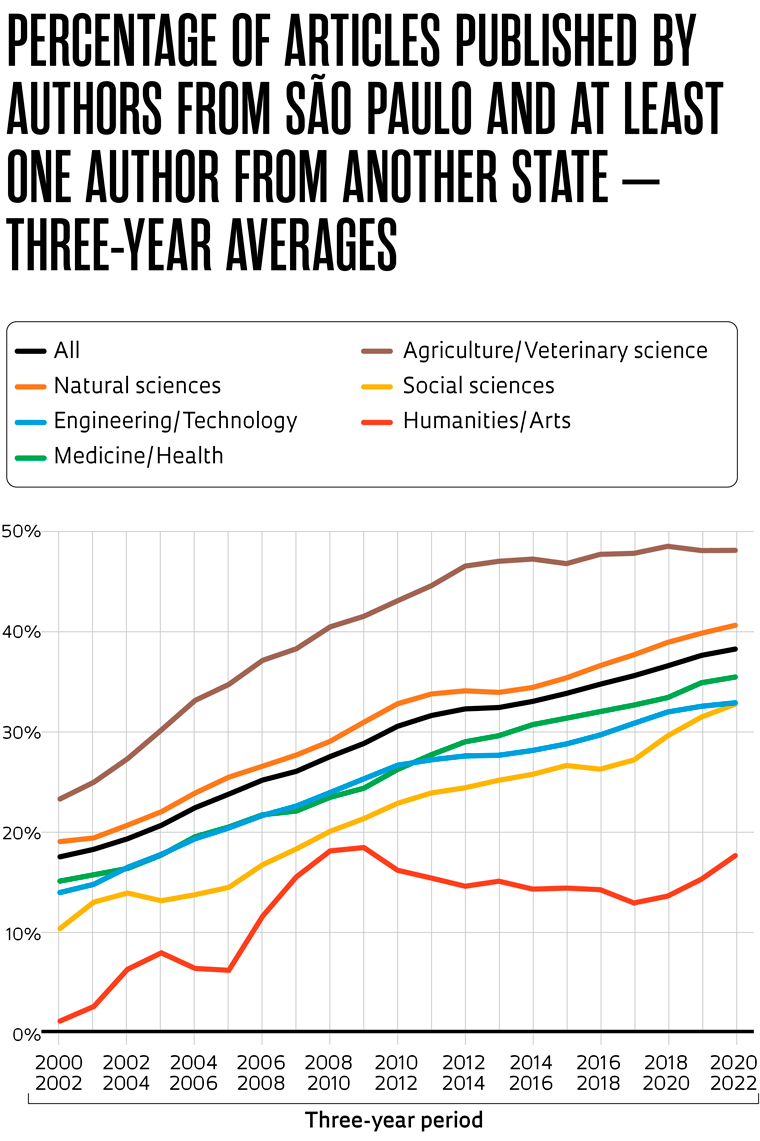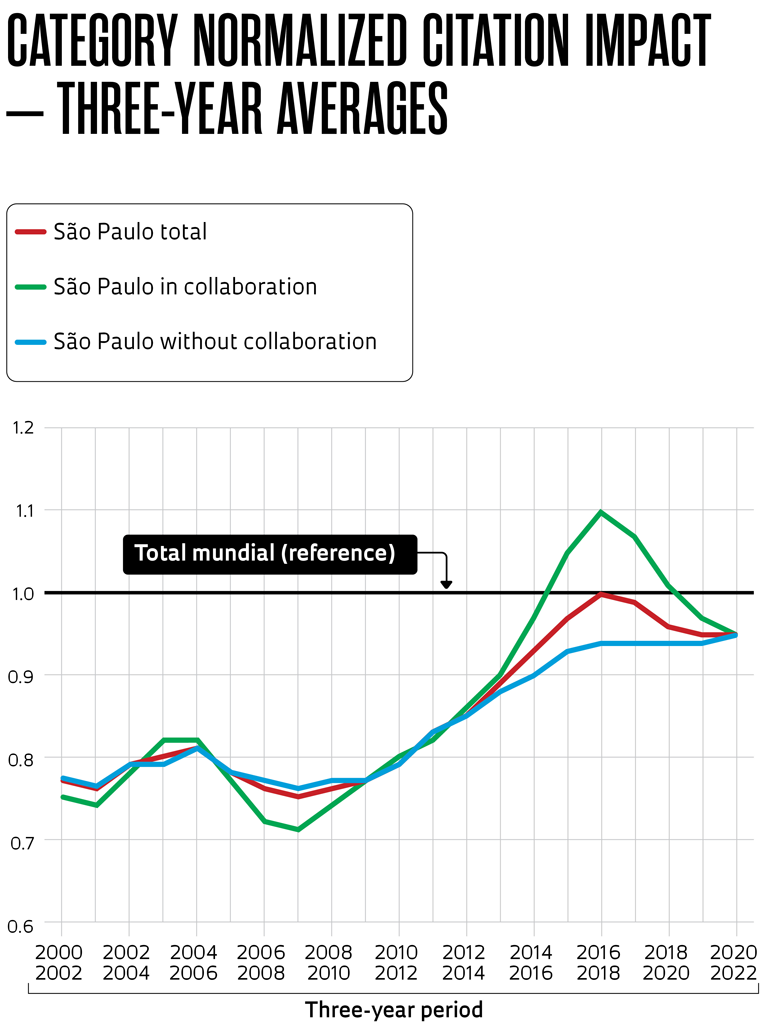- Scientists from São Paulo participated as authors1 of 28,481 scientific articles2 between 2020 and 2022 (annual average)
- Of these, 10,943, (38.4%) featured at least one author based in another Brazilian state
- There was significant growth in collaborations in all major fields of knowledge3 between the three-year periods of 2000–2002 and 2020–2022
Data
Scientific collaborations between São Paulo and other states

- The highest level of collaboration was observed in agriculture and veterinary science (almost 50% in the last three years), followed by natural sciences (41%)
- In medicine and health, engineering and technology, and the social sciences, between 32% and 35% of articles were the product of collaborations, followed by humanities and arts at 18%
- Collaborations tend to increase the impact of scientific articles, measured by the number of times they are cited by other papers. The Category Normalized Citation Impact4, which uses the world total as a reference (CNCI = 1.00), is shown in the graph below, which demonstrates how this index has been influenced by collaborations between researchers from São Paulo and other states

- Until 2013–2015, collaboration had no significant impact on the citation index, but from 2014–2016 the positive influence began to rise until it peaked in 2016–2018. Since then, the effect has reversed—exacerbated by the COVID-19 pandemic—with the impact declining until it eventually disappeared in 2020–2022
- There were small differences in the impact of articles by authors from São Paulo in all the major fields of knowledge5 in the last three-year period, both with and without collaborations. The biggest increase in favor of collaborative papers was in the fields of medicine and health (0.08 pp6)
- In 2016–2018, the biggest differences occurred in medicine and health (+0.29 pp, in favor of articles involving collaborations) and natural sciences (+0.14 pp). The only fields that saw no significant positive change were engineering and technology and agriculture and veterinary sciences
Notes (1) A published article is attributed to a country/region if at least one of the authors is based there (2) Includes scientific articles indexed by the Web of Science database or listed on the Incites website. The types included were Articles, Reviews, and Proceedings Papers (3) Based on the major fields of knowledge defined by the OECD (4) Uses the Category Normalized Citation Impact (CNCI) index, calculated by Incites using Web of Science data. The CNCI considers the relationship between the number of citations in a field per year, based on a set of articles, and the average for the set of all articles published in the field worldwide that year (5) This analysis disregards the field of humanities and arts due to the small number of cases and the great variability of the indicator (6) Percentage points.Source Incites/Clarivate, data accessed on 11/30/2023. Prepared by Studies & Indicators team, DPCTA/FAPESP
Republish